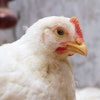
Digital tools like artificial intelligence (AI) can help poultry producers optimize the decision-making process when it comes to feed management and assessing the health of the gut microbiome.
“AI-powered tech can provide recommendations how to improve the feed composition to recommendations to improvements in farm management practices with the goal of improved performance and health of the flock,” said Henk Enting, senior technical for Cargill’s animal nutrition business.
Poultry microbiome assessment
Advances in AI could lead to a better understanding of the poultry gut microbiome.
In recent years, the microbiome has captured the attention of researchers, who have linked the microbial makeup of the gut to a variety of poultry diseases and other conditions affecting flock health.
The health of the gut microbiome, a collection of microorganisms present in the gastrointestinal tract, can be affected by changes in raw materials, diet, additives, vaccine programs and farm management practices.
For example, producers can learn why the broilers at one farm may respond better to a higher concentration of feed additives compared to another farm.
“The difference was in the maturation of the microbiota in the broilers. An outcome of this was to focus directly on the maturation of the microbiota by changing the diet as well changes in management practices rather than focusing solely on the concentration of the additives,” Etting explained.
A combination of statistical analysis, machine learning and AI can work together to create insights and recommendations on the status of a flock’s microbiome, based on data from a non-invasive cloacal swab-sampling of live birds. Producers can use this information to determine what actions to take to improve flock performance.
Feed management through broiler weight predictions
Through 3D imaging and computer vision, AI can also provide real-time monitoring of broiler weight, a time-consuming and labor-intensive process. Replacing the manual weighing process can result in a broiler weight estimation accuracy of 95%.
Predictive modeling data can help producers anticipate issues and optimize the feed conversion ratio for their flock. This can save money on production costs, while sustainably reducing process variability and improving harvest planning.


















